“One of the central hubs of German biodynamic plant breeding community”. We were told this by many people through our travels and we decided that we had to visit Dottenfelder-hof (translated version). After a nice hike in the morning from the train station we arrived invigorated to meet with our host Martin Kern, a very personable character with many years of plant breeding experience. Martin showed us all around the Hof, with brief stops at many of the farm’s constituent areas. . In German biodynamic tradition the site is the collection of many integrated and collaborative facets. Some examples of these endeavors are the plant breeding programs, dairy cow and chicken production, cheese and bread making, anthroposophical educational programs, and a biodynamic storefront. Many of the people who worked there lived there too and with all that was going on, it was a bustling scene (about 100 people living and working there). I could compare it to intentional communities in the US but that would be misleading. The place seemed more like a well organized, fairly self-sustaining village. Lots of people making a living centered around an agricultural and educational foundation.
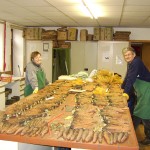
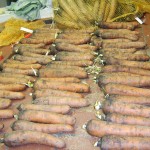
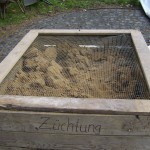
Rodelika carrot tasting, selection and overwinter storage
Some of their achievements in the area of plant breeding:
Carrots – Dietrich Bauer has spent over 20 years breeding vegetables. What he is most famous for is his carrot variety ‘Rodelika’, available in the US through Turtle Tree Seeds. This carrot is famous for its flavor, especially when juiced. “Rodelika” juice is available in the juice section of many stores that carry biodynamic products, right next to the standard “carrot” juice. More marketing with variety names is something that could help expose people to the diversity of crops and help preserve those crops actively within society, like an old story or play. While at Dottenfelder-hof we helped select Rodelika lines for flavor and yield. Getting both flavor and yield simultaneously is one of the more difficult aspects of plant breeding. By the way, the carrot juice is excellent.
Cabbage – Dietrich Bauer has developed 3 cabbage varieties, also available in the US through Turtle Tree Seeds. A red cabbage named ‘Rodynda‘ and two green cabbages named ‘Dowinda‘ and ‘Dottenfelder Dauer‘. ‘Dottenfelder Dauer’ is an excellent storage variety that can last many months in storage. These cabbages are very important because we have almost completely lost our open-pollinated cabbage varieties in the US.
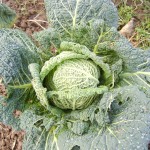
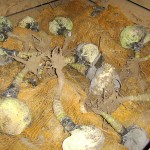
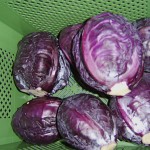
Cabbage in the field, in storage and for sale
Parsnips – Though not top priority, the folks at Dottenfelder-hof have done some work with parsnips. They are trying to develop a parsnip variety with a bulbous shape rather than the classic spear shape. The round beet-like shape is preferred by many anthroposophic thinkers. We were given some of these great parsnip varieties and we planted them in Oregon for seed increase and trial.
Grain – Their wheat breeding program has introduced a new variety by Dr. Hartmut Spieß and his team called ‘Dottenfelder Lux’. The variety, while being bred specifically for biodynamic and organic growing conditions, has taller straw. This attribute is advantageous for livestock forage, material for compost and thatching roofs. The bakery at Dottenfelderhof is now baking bread from this wheat and marketing it with this in mind. Marketing bread by seed variety is a fantastic idea, though we may have a little trouble getting Americans to grasp this concept.
Other Vegetables – Christopher Matthes oversees the breeding of tomatoes, Brussels sprouts, sweet corn, lettuce, peppers and radishes.
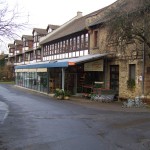
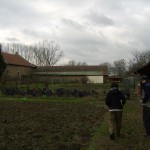
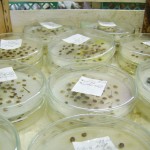
Biodynamic store, tour with Martin, parsnip germination
Like many of the biodynamic breeders, the teams at Dottenfelder Hof get some financial support from Kultursaat. We also saw a similar kind of community supporting integration at the other biodynamic communities we visited. Blending gardening, education, crop production, animal husbandry and many other pieces only seems to help everyone involved. How else would an independent plant breeder find the infrastructure needed to do great work? How else will we bring seed stewardship back into the forefront of our culture? This is a good model that is actually working.
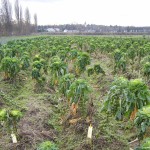
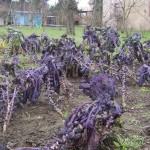
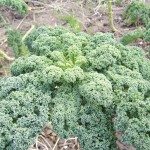
Green Brussles sprouts, red Brussles sprouts and güne kohl(green curly kale)
Seed is a cultural! And they take it seriously at Dottenfelder-hof.
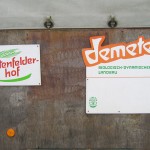
Leave a Reply